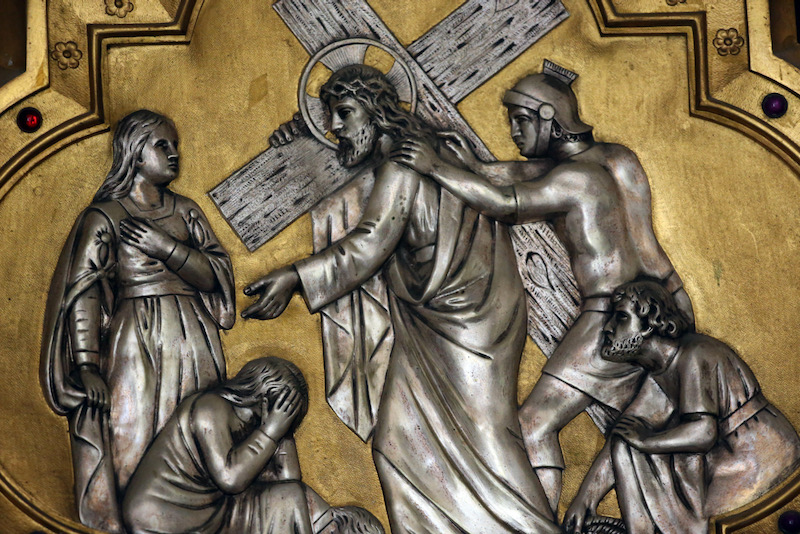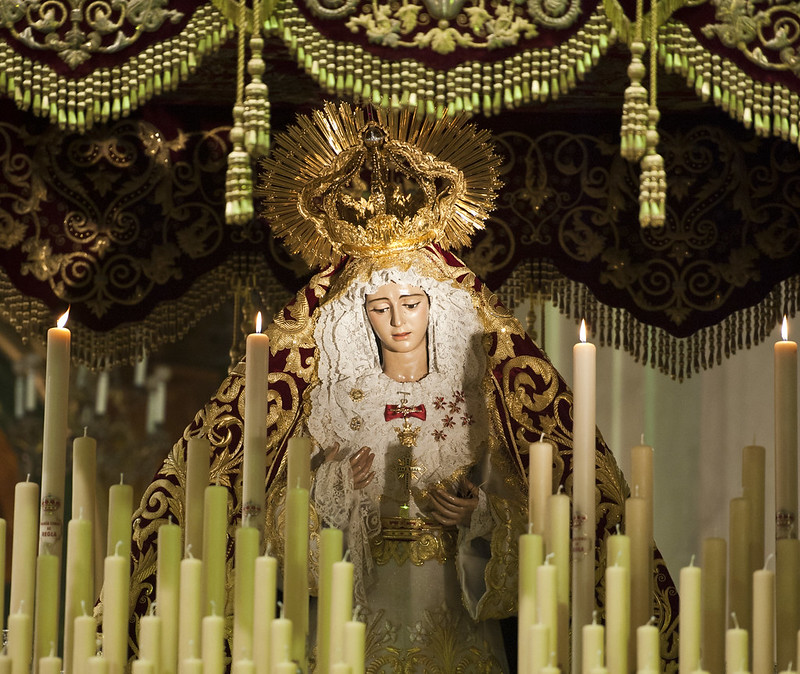Though it was defined as a dogma only as recently as 1950, the bodily assumption of Our Lady into heaven when her life on earth had come to its end, is the oldest of all the Marian feasts of the Church.
From earliest times, Christians have been convinced of Mary’s unique holiness; and it was that conviction that gave rise to the belief that, as her life in this world was uniquely holy, so both her coming into the world and her going from it, were also uniquely blessed.
The Immaculate Conception and the Assumption form, as it were, the “bookends” that frame her unique life on earth. The antiquity and ubiquity of this belief is well-attested. It seems that as far back as the Council of Chalcedon in 451, the Emperor Marcian (396-457) and his wife, Pulcheria, asked the Bishop of Jerusalem about the remains of the Virgin Mary. He told them that when her tomb, when opened, had been found to be empty.
It’s significant that, though there were many bones of saints in circulation as relics in the Middle Ages, no one has ever claimed to have any part of Mary’s body: her “veil”, perhaps, but never her bones. We also now know that the earliest sermons about Mary, dating from the 6th century, take her Assumption for granted, dwelling on the fact that Mary’s body didn’t corrupt in the tomb, as ours will, and was never separated from her soul, as ours will be, albeit temporarily, at death.
Interestingly, those sermons have only come to light since the dogmatic proclamation: they were unknown at the time of the definition. At that definition, Pope Pius XII proclaimed the long-held belief in the Assumption of the Blessed Virgin Mary to be a dogma of the Catholic faith in the apostolic constitution Munificentissimus Deus. By the authority of Our Lord Jesus Christ, of the blessed Apostles, Peter and Paul, and by our own, we proclaim and define it to be a dogma revealed by God, that the immaculate Mother of God, Mary ever Virgin, when the course of her earthly life was finished, was taken up body and soul into the glory of heaven.
In other words, at the end of her life on earth, Mary entered immediately, body and soul, into that perfected relationship with God we call “heaven”. Why? The decree says: It seems impossible that she who conceived Christ, bore him, fed him with her milk, held him in her arms and pressed him to her bosom, should after this earthly life be separated from him in either body or soul. The heart of the dogma of the Assumption, then, is the affirmation that Mary shared – and shares – immediately in the fullness of the resurrection which God has promised us all. The glory she enjoys is the glory which is, through the resurrection of her Son, our destiny too. Mary, in other words, is both what we are, and what, by God’s grace, we will become. In her entire being, she enjoys complete communion and oneness with God, in and through Christ, her Son. She followed the Spirit’s prompting, even though it was far from clear, to her at least, where she was being led. She bore in her womb the Word made flesh, made flesh from her own flesh. And her journey, now completed, is our journey too.
The last stage of our journey will be accomplished, of course, at our death, the moment when we must accept who we are and what, through our free choices, we have become: a moment of powerlessness, to be sure, but the moment when, full of faith, we place ourselves entirely into the hands of God. Mary’s Assumption reassures us that, far from being an end, death is a completion, the last act of faith in this life and faith’s fulfilment in God’s presence for ever. Mary died as she lived, in complete and trusting faith: and we are called to do the same. The proclamation of the Assumption came shortly after the depredations of the Second World War and coincided with the coming down of the Iron Curtain and the spread of communist oppression.
The Pope refers in the decree to the destruction of life, the desecration of the human body and the threat posed to our God-given identity constituted by our being made in the image and likeness of God. So, in solemnly recognising Mary’s unique destiny, the Church was reaffirming the inviolable dignity of every human being – the poor, the hungry, the unborn, the old, the sick, the migrant, the asylum seeker, the oppressed and the persecuted. He says explicitly that Mary’s bodily assumption emphasises “the exalted destiny of both our body and our soul”. The doctrine of Mary’s assumption is thus an implicit criticism of the denigration of the body in an overly spiritualistic understanding of the human person, the denigration of the human spirit in hedonism, and the denigration of life’s sacredness in violence of any kind.
Everything we believe about Our Lady arises from her unique relationship with her Son and every doctrine concerning her directs our attention to him. How significant it therefore is that she herself deflects attention away from herself and to him when, in her last recorded utterance in the gospels at the 4 marriage feast of Cana, she tells the servants (and, through them, us): “Do whatever he tells you.” (John 25 )



 Loading ...
Loading ...
What do you think?
You can post as a subscriber user ...
User comments (0)